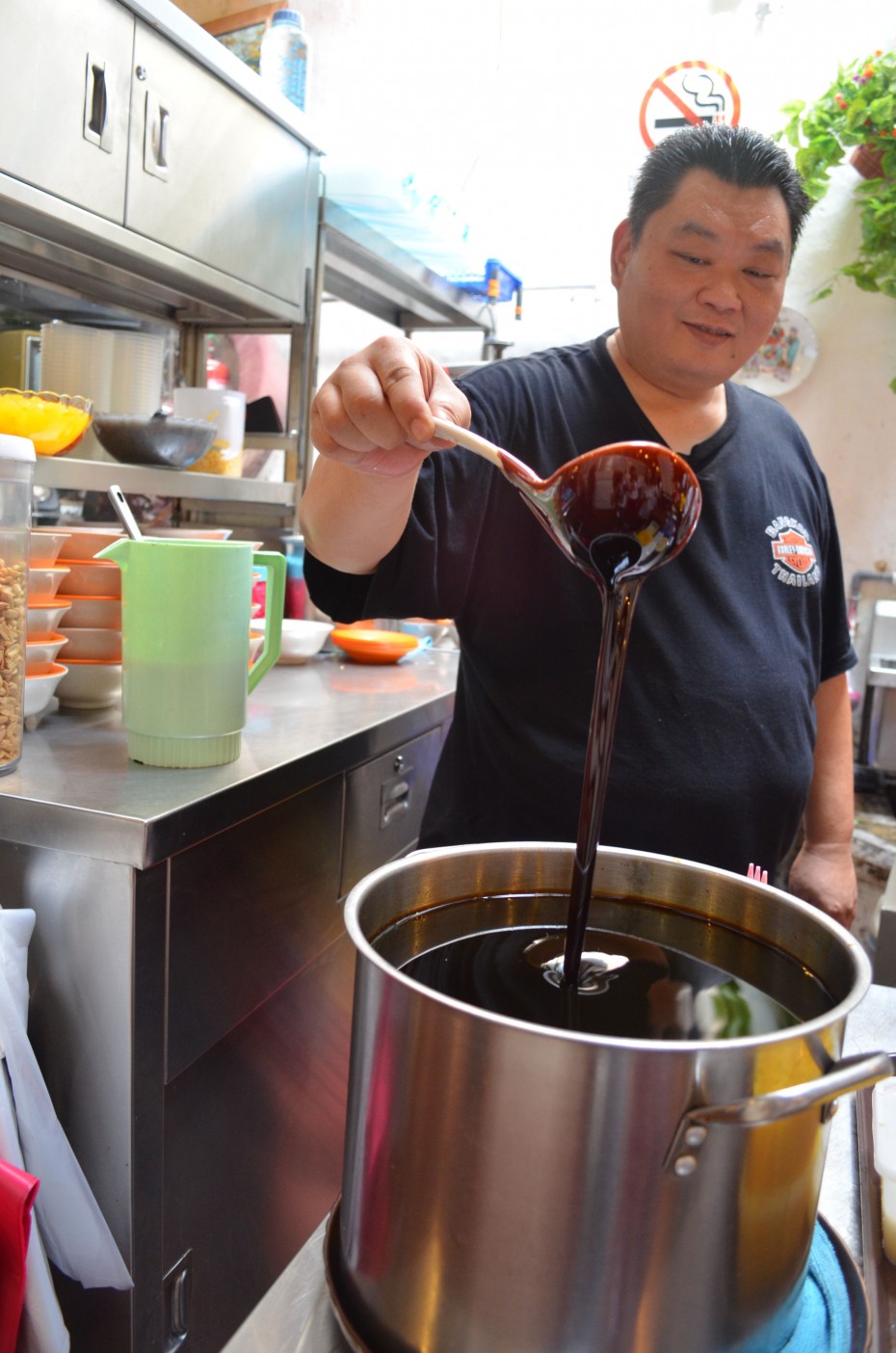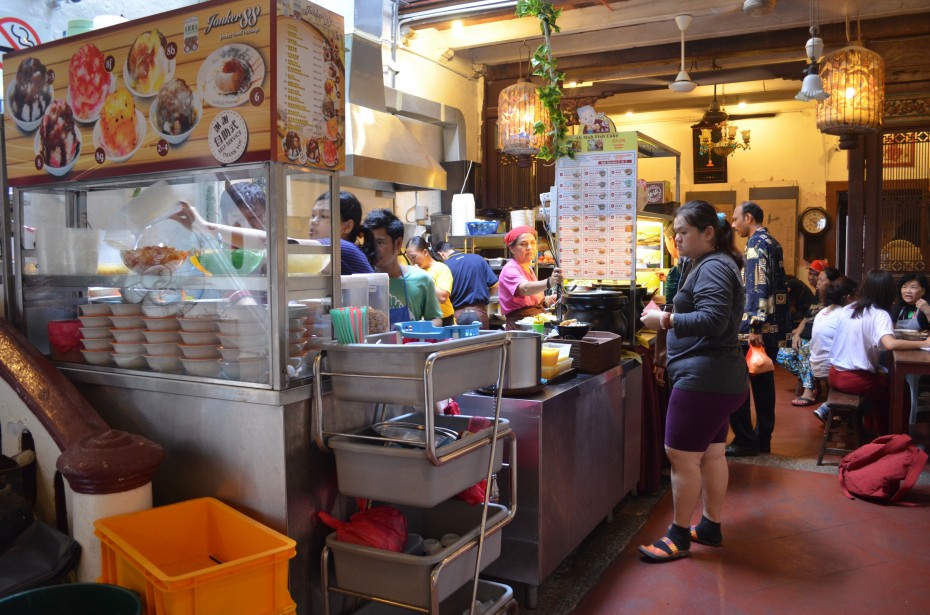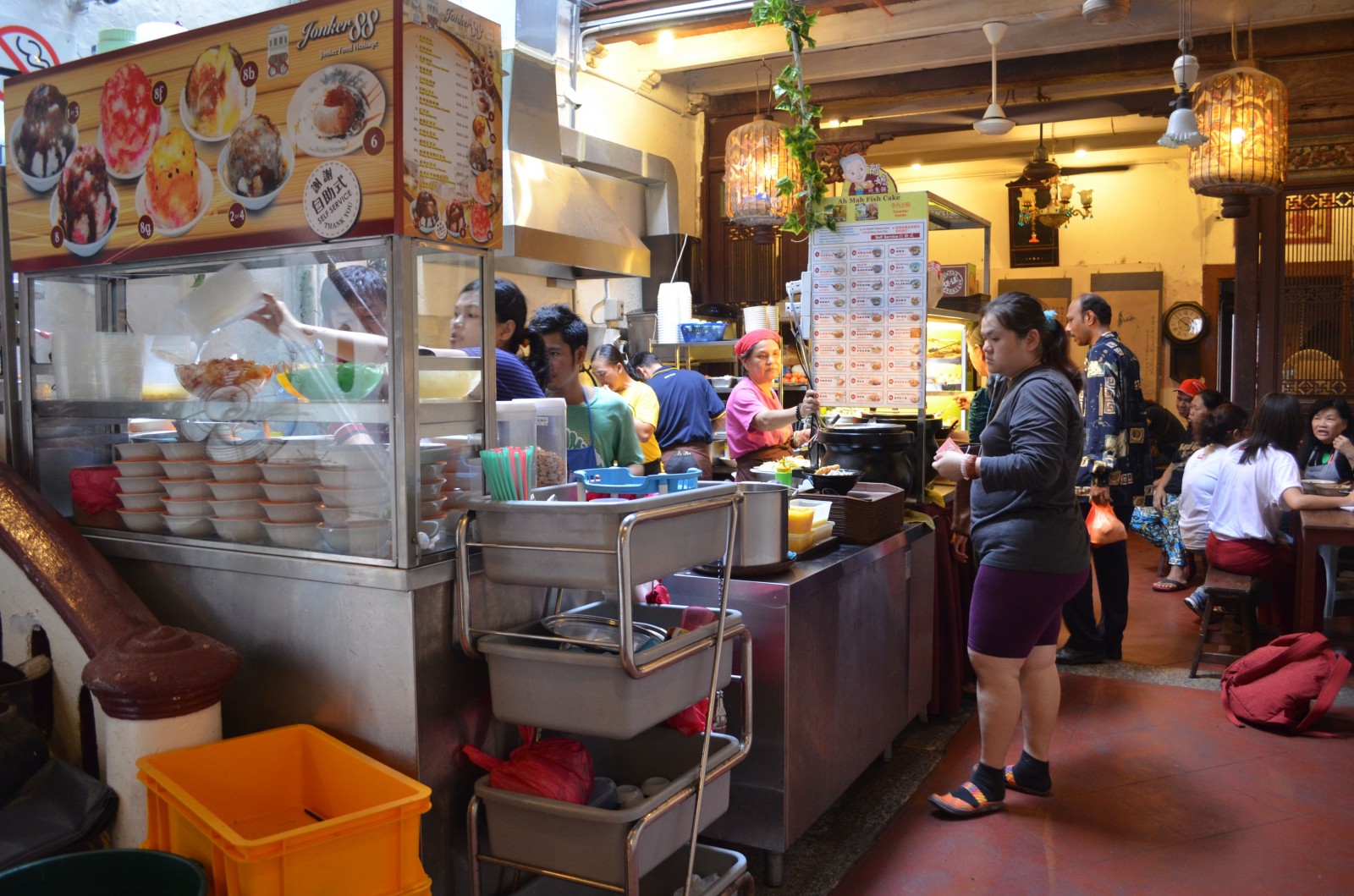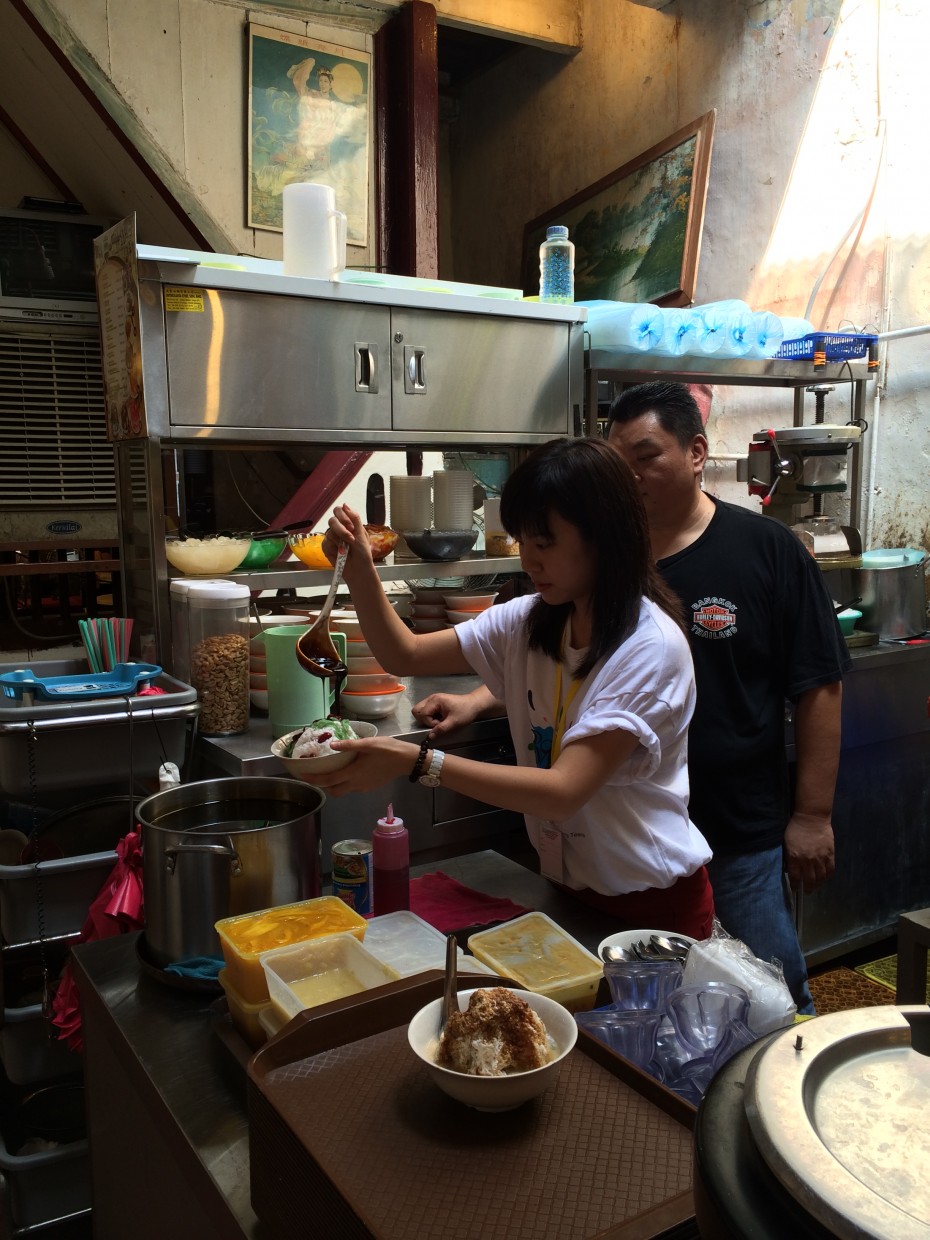MOST people would complain if they had to queue up to patronise a restaurant, more so if the waiting is done under the hot sun. Jonker 88, one of numerous restaurants on Jonket Street, has no such problems, though, given its sumptuous cendol.
But what makes its bowl of cendol so special? According to Jonker 88 owner, Justin Yoong, the secret lies in the gula Melaka he uses.

Oh, so fine: Jonker 88 owner, Justin Yoong has been making gula Melaka for the past 17 years and it is the main ingredient in the cendol sold at his shop.
The 42-year-old, who revealed he has always had an interest in local delicacies, picked up the art of making gula Melaka in 1997 when he decided to expand his collectibles business by incorporating cendol and asam laksa stalls into the shop.
Gula Melaka has been the primary sweetening ingredient in his cendol ever since, contributing to its unique taste.
“I had no family recipe to refer to, so I got most of my knowledge for making gula Melaka from the baba and nyonya community. I kept experimenting and changing the recipe before finding the perfect one that suits the taste of our customers,” he explained.
Yoong also has a steadfast adherence to tradition. After all these years, he still prefers to make gula Melaka by hand, and that probably explains why the taste differs slightly every time. Best of all, Yoong has no qualms in sharing his recipe with all and sundry.
The entire process begins with the search for the right coconuts, and for that, Yoong drives out to a plantation an hour away from the city.
According to him, the ideal time to source coconuts is during the dry season, which is from January to April and September to early November, because that’s when the coconut trees absorb water from the soil, producing better tasting sap compared to the rainy season.
Making the sweetener itself is a process that takes three days, starting with Yoong boiling the sap of the coconut flower, which then thickens into a syrup. Then, he pours that into bamboo tubes and leaves them to solidify.
The process is the same for the liquefied gula Melaka that is used in his cendol. But instead of pouring them into bamboo tubes, Yoong adds more water to dilute it.
“You have to put your heart and soul into making gula Melaka. You have to add a touch of sincerity into it because then, the customers can taste it,” said Yoong.
Besides the cendol, Jonker 88 is also known for its asam laksa, as well as for its collection of antiques and artifacts, such as old coins and rare bank notes.

In 1997, Yoong expanded his collectibles business to include cendol and asam laksa stalls. “The cendol is sweet, while the asam laksa is sour, so I feel they go well together,” said Yoong.
Inspired by his collector dad Yoong Ngam Chien, Yoong’s passion for antiques began when he was 12. When he turned 14, the enterprising young boy started his collectibles business on Jonker Street in 1986.
In 1993, he moved a few doors down to his current location, which he named Jonker 88 after the street name and the lot number, 88.
According to Yoong, before the place was turned into one of the hottest dessert places on Jonker Street, the lot was (and still is) owned by an association that played a vital role in assisting Chinese immigrants who had a tough time adjusting to a new environment when they moved here more than 100 years ago.
The association aided them in any way possible, like finding shelter, food and getting jobs in Malaysia. They also helped them look for their family members and friends who got separated during the migration.
Given its rich history and of course, the tasty food, it’s clear why locals and tourists from Singapore, China and Taiwan don’t mind walking through the busy street just to sample Jonker 88’s cendol.
“It’s not only about the cendol, but also the environment. They come in, sit down, admire the collectibles that decorate the shop and enjoy the food we serve.
“The cendol is sweet, while the asam laksa is sour, so I feel they go well together. And that’s why people come for a meal and dessert,” said Yoong.




Tell us what you think!